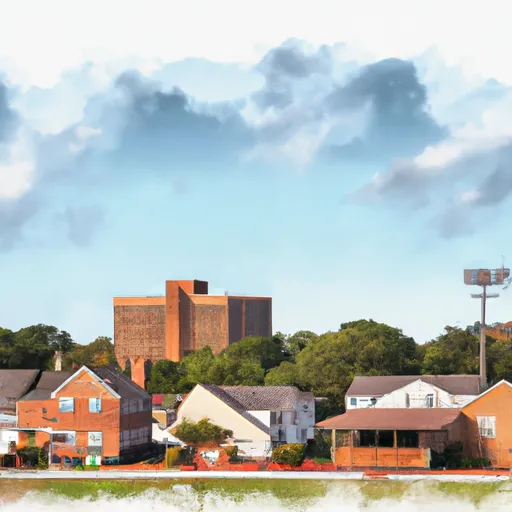-
 Snoflo Premium
Snoflo Premium
Get unlimited access to all our content
With no Ad interruptions! - Start Your Free Trial Login with existing account
Woodside
Eden Index
Climate
9.7
•
Recreation
4.5
•
Community
3.1
•
Safeguard
6.2/10

Woodside, Delaware is a small town located in Kent County. The climate in Woodside is characterized by mild winters and hot, humid summers. The average temperature ranges from 30°F (-1°C) in winter to 88°F (31°C) in summer. Precipitation is fairly evenly distributed throughout the year, with an annual average of 45 inches (114 cm). The hydrology constituents in Woodside primarily consist of the Murderkill River, which flows through the southern part of the town. This river provides opportunities for recreational activities like fishing, boating, and kayaking. Additionally, Woodside is surrounded by picturesque forests and natural landscapes, making it an ideal place for hiking, camping, and birdwatching. Nearby parks, such as the Killens Pond State Park and Brecknock Park, offer various amenities like picnic areas, nature trails, and playgrounds. With its diverse outdoor recreation opportunities and pleasant climate, Woodside attracts nature enthusiasts and outdoor lovers from near and far.
What is the Eden Index?
The Snoflo Eden Index serves as a comprehensive rating system for regions, evaluating their desirability through a holistic assessment of climate health, outdoor recreation opportunities, and natural disaster risk, acknowledging the profound impact of these factors on livability and well-being.
Climate Health Indicator (CHI): 9.7
Woodside receives approximately
1152mm of rain per year,
with humidity levels near 77%
and air temperatures averaging around
14°C.
Woodside has a plant hardyness factor of
7, meaning
plants and agriculture in this region tend to thrive during the non-winter months.
By considering the ideal temperature range, reliable water supplies, clean air, and stable seasonal rain or snowpacks, the Climate Health Indicator (CHI) underscores the significance of a healthy climate as the foundation for quality living.
A healthy climate is paramount for ensuring a high quality of life and livability in a region, fostering both physical well-being and environmental harmony. This can be characterized by ideal temperatures, reliable access to water supplies, clean air, and consistent seasonal rain or snowpacks.
Weather Forecast
Streamflow Conditions
Lower Delaware
Area Rivers
Lower Delaware
Snowpack Depths
Lower Delaware
Reservoir Storage Capacity
Lower Delaware
Groundwater Levels
Recreational Opportunity Index (ROI): 4.5
The Recreational Opportunity Index (ROI) recognizes the value of outdoor recreational options, such as parks, hiking trails, camping sites, and fishing spots, while acknowledging that climate plays a pivotal role in ensuring the comfort and consistency of these experiences.
Access to outdoor recreational opportunities, encompassing activities such as parks, hiking, camping, and fishing, is crucial for overall well-being, and the climate plays a pivotal role in enabling and enhancing these experiences, ensuring that individuals can engage in nature-based activities comfortably and consistently.
Camping Areas
| Campground | Campsites | Reservations | Toilets | Showers | Elevation |
|---|---|---|---|---|---|
| Trap Pond State Park | 140 | 36 ft | |||
| Dover AFB Military | None | 25 ft | |||
| Soroptimist Park | 20 | 13 ft |
Nearby Ski Areas
Catastrophe Safeguard Index (CSI):
The Catastrophe Safeguard Index (CSI) recognizes that natural disaster risk, encompassing floods, fires, hurricanes, and tornadoes, can drastically affect safety and the overall appeal of an area.
The level of natural disaster risk in a region significantly affects safety and the overall livability, with climate change amplifying these risks by potentially increasing the frequency and intensity of events like floods, fires, hurricanes, and tornadoes, thereby posing substantial challenges to community resilience and well-being.
Community Resilience Indicator (CRI): 3.1
The Community Resilience Indicator (CRI) recognizes that education, healthcare, and socioeconomics are crucial to the well-being of a region. The CRI acknowledges the profound impact of these elements on residents' overall quality of life. By evaluating educational resources, healthcare accessibility, and economic inclusivity, the index captures the essential aspects that contribute to a thriving community, fostering resident satisfaction, equity, and social cohesion.

